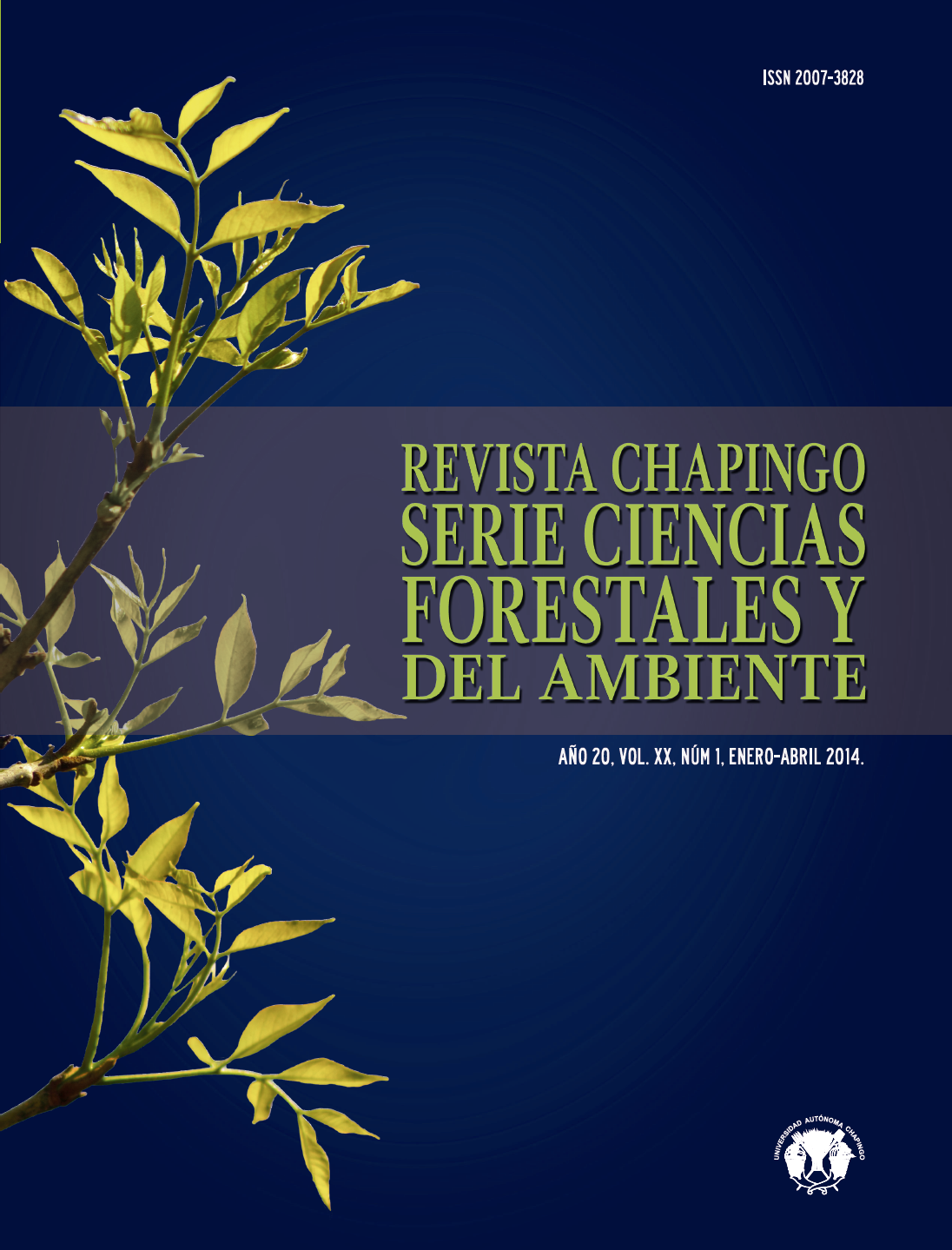Abstract
The mycelial growth rates of ectomycorrhizal fungi Suillus granulatus and S. brevipes were assessed in three culture media (PDA, BAF and MMN) at two pH values (4.8 and 5.8) in order to select the best culture medium. The strains were isolated from sporocarps collected in a Pinus hartwegii forest in Cofre de Perote National Park, Veracruz, Mexico. Significant differences (Tukey, P ≤ 0.05) in the growth area of both species were found. The highest values were recorded in the PDA medium. Concerning the pH values tested, there were no significant differences. Each of the tested media can be used for culturing the S. granulatus and S. brevipes strains, depending on the objectives. The PDA medium was the best substrate for the growth of the strains. We suggest using the BAF medium for mass production of mycelium for inoculum, and the MMN medium for either strain maintenance or mycorrhization testing.
References
Adobe Systems, Inc. (2010). Adobe Photoshop Extended CS5©. Computer software para Windows vista 7, XP. San José, CA, USA: Autor.
Breitenbach, J., & Kränzlin, F. (1991). Fungi of Switzerland. Vol. 3 Boletes and agarics. Lucerne, Switzerland: Mykologia Lucerne.
Brundrett, M., Bougher, N., Dell, B., Grove, T., & Malajczuc, N. (1996). Working with mycorrhizas in forestry and agriculture. Camberra, Australia: ACIAR. http://aciar.gov.au/files/node/2241/mn32_pdf_66358.pdf
Chávez, D., Pereira, G., & Machuca, A. (2009). Efecto de tipos de inóculos de tres especies fúngicas en la micorrización controlada de plántulas de Pinus radiata. Bosque, 30, 4–9. http://www.scielo.cl/pdf/bosque/v30n1/art02.pdf
Díaz, G., Flores, R., & Honrubia, M. (2009a). Descripción de cultivos miceliares de Boletales neotropicales y europeos (Boletus grupo edulis, Boletellus y Suillus) y formación de primordios de B. edulis en cultivo puro. Revista Mexicana de Micología, 30, 1–7. http://www.scielo.org.mx/pdf/rmm/v30/v30a1.pdf
Díaz, G., Carrillo, C., & Honrubia, M. (2009b). Production of Pinus halepensis seedlings inoculated with the edible fungus Lactarius deliciosus under nursery conditions. New Forests, 38, 215–227. doi: https://doi.org/10.1007/s11056-009-9142-y
García-Rodríguez, J. L., Pérez-Moreno, J., Aldrete, A., Cetina-Alcalá, V. M., & Vaquera-Huerta, H. (2006). Caracterización del hongo silvestre ectomicorrízico Pisolithus tinctoreus (Pers.) Coker et Couch en cultivo y en simbiosis con eucalipto y pino. Agrociencia, 40, 665–676. http://www.colpos.mx/agrocien/Bimestral/2006/sep-oct/art-11.pdf
Guigón-López, C., Guerrero-Prieto, V., Vargas-Albores, F., Carvajal- Millán, E., Ávila-Quezada, G. D., Bravo-Luna, L.,…Lorito, M. (2010). Identificación molecular de cepas nativas de Trichoderma spp. su tasa de crecimiento in vitro y antagonismo contra hongos fitopatógenos. Revista Mexicana de Fitopatología, 28, 87–96. http://www.redalyc.org/pdf/612/61218468002.pdf
Ground, D. W., & Harrison, K. A. (1976). Nova Scotian Boletes. Germany: J. Cramer.
Hatakeyama, T., & Ohmasa, M. (2004a). Mycelial growth of strains of the genera Suillus and Boletinus in media with a wide range of concentrations of carbon and nitrogen sources. Mycoscience, 45, 169–176. doi: https://doi.org/10.1007/s10267-003-0169-1
Hatakeyama, T., & Ohmasa, M. (2004b). Mycelialgrowth characteristics in a split-plate culture of four strains of the genus Suillus. Mycoscience, 45, 188–199. doi: https://doi.org/10.1007/s10267-003-0174-4
Honrubia, M., Torres, P., Díaz, G., & Cano, A. (1992). Manual para micorrizar plantas en viveros forestales. Madrid, España: Ministerio de Agricultura, Pesca y Alimentación, ICONA.
Honrubia, M., Torres, M., Díaz, G., & Morte, A. (1995). Biotecnología forestal: Técnicas de micorrización y micropropagación de plantas. Murcia, España: Universidad de Murcia.
Hutchison, L. J. (1991). Description and identification of cultures of ectomycorrrhizal fungi found in North America. Mycotaxon, 42, 387–504.
Kusuda, M., Ueda, M., Konishi, Y., Yamanaka, K., Terashita, T., & Miyatake, K. (2007). Effects of carbohydrate substrate on the vegetative mycelial growth of an ectomycorrhizal mushroom, Tricholoma matsutake isolated from Quercus. Mycoscience, 48, 358–364. doi: https://doi.org/10.1007/s10267-007-0384-2
Levene, H. (1960). Robust test for equality of variances. In I. Olkin, H. Hotelling, W. Hoeffding, W. C. Madow, & H. B. Mann (Eds.), Contributions to probability and statistics: Essays in honor of Harold Hotelling (pp. 278–292). USA: Stanford University Press.
Marx, D. H. (1969). The influence of ectotrophic mycorrhizal fungi on the resistance of pine roots to pathogenic infections I. Antagonism of mycorrhizal fungi to root pathogenic fungi and soil bacteria. Phytopathology, 59, 153–163. http://www.apsnet.org/publications/phytopathology/backissues/Documents/1970Articles/Phyto60n10_1472.pdf
Moser, M. (1960). Die Pilze Mitteleuropas: Die Gattung Phlegmacium (Schleimköpfe). Helbrunn, Österreich: J. Klinkhardt.
Ohta, A. (1997). Ability of ectomycorrhizal fungi to utilize starch and related substrates. Mycoscience, 38, 403–408. doi: https://doi.org/10.1007/BF02461680
Pereira, G., Herrera, J., Machuca, A., & Sánchez, M. (2007). Efecto del pH sobre el crecimiento in vitro de hongos ectomicorrícicos recolectados en plantaciones de Pinus radiata. Bosque, 28, 215–219. http://www.scielo.cl/pdf/bosque/v28n3/art05.pdf
Pérez-Moreno, J. (2012). Los hongos comestibles ectomicorrícicos y su biotecnología. In J. E. Sánchez, & G. Mata (Eds.), Hongos comestibles y medicinales en Iberoamérica: Investigación y desarrollo en un entorno multicultural (pp. 19–28). Tapachula, Chiapas: Colegio de la Frontera Sur.
Sánchez, F., Honrubia, M., & Torres, P. (2000). Características culturales de algunos hongos ectomicorrícios en cultivo puro. Revista Iberoamericana de Micología 17, 127–134. http://www.reviberoammicol.com/2000-17/127134.pdf
Smith, S. E., & Read, D. J. (1997). Mycorrhizal symbiosis (2nd ed.). London: Academic Press.
Sylvia, D. M. (1999). Mycorrhizal symbiosis. In D. M. Sylvia, J. J. Fuhrmann, P. G. Hatel, & D. A. Zuberer (Eds.), Principles and applications of soil microbiology (pp. 408–426). New Jersey, USA: Prentice Hall.
StatSoft, Inc. (2007). STATISTICA (Data analysis software system). Version 7.0 para windows. USA.
Torres, O., & Honrubia, M. (1991). Dinámica de crecimiento y caracterización de algunos hongos ectomicorrícicos en cultivo. Cryptogamie Mycologie, 12, 183–192.
Vázquez-García, A., Santiago-Martínez, G., & Estrada-Torres, A. (2002). Influencia del pH en el crecimiento de quince cepas de hongos ectomicorrizógenos. Anales del Instituto de Biología, 73, 1–15. http://www.ejournal.unam.mx/bot/073-01/BOT73101.pdf

This work is licensed under a Creative Commons Attribution-NonCommercial 4.0 International License.
Copyright (c) 2014 Revista Chapingo Serie Ciencias Forestales y del Ambiente



